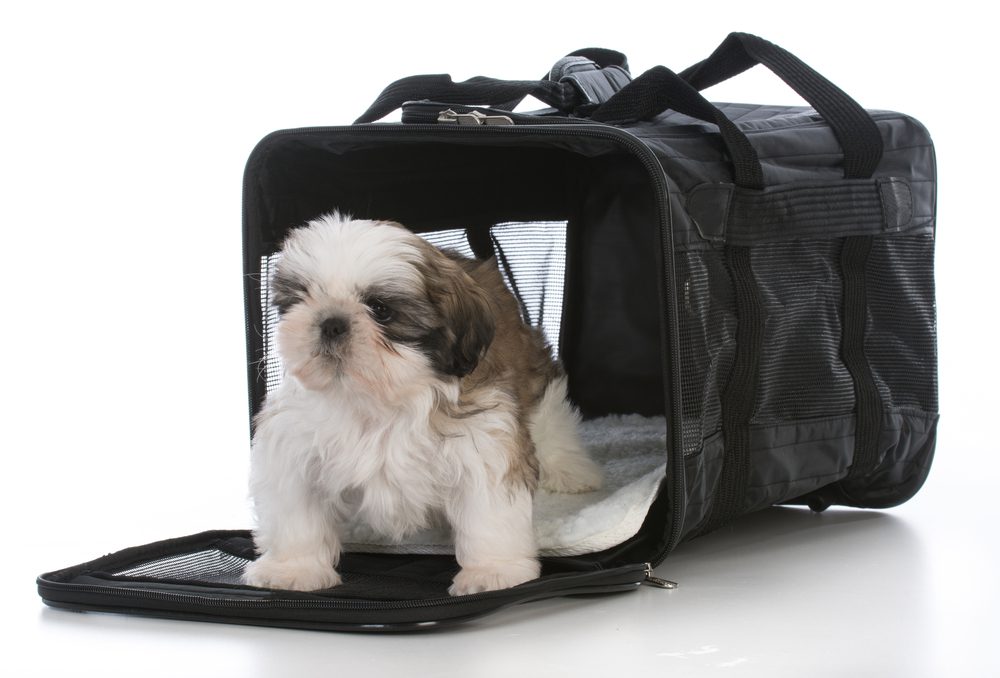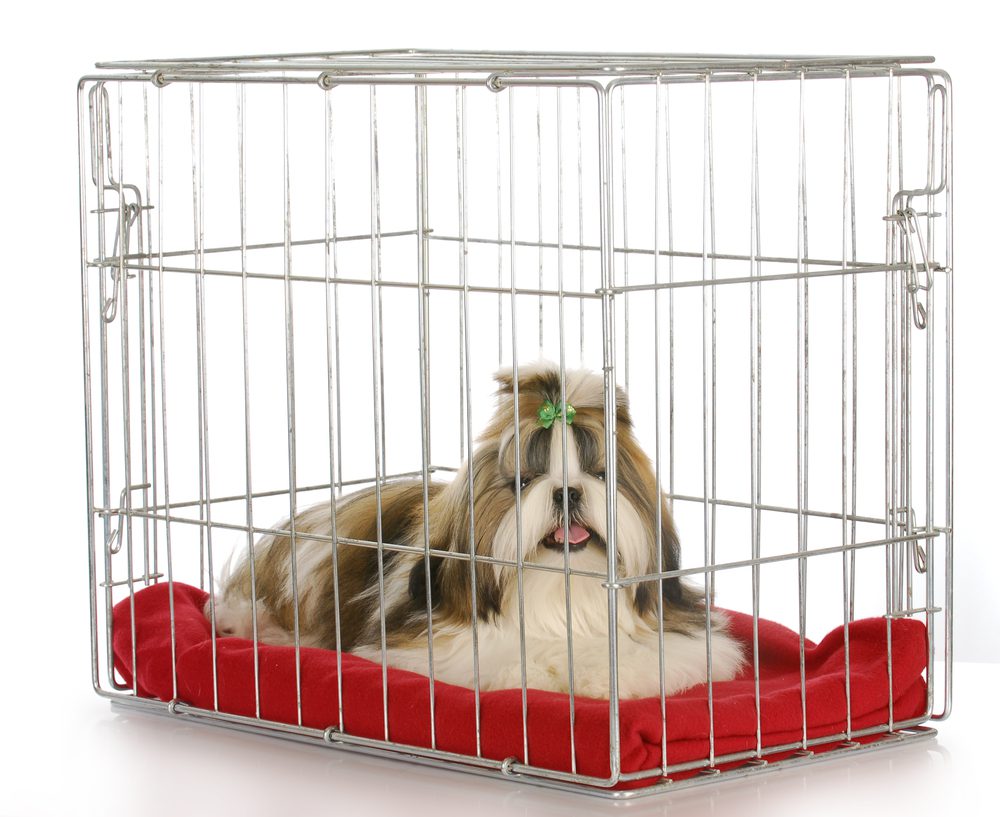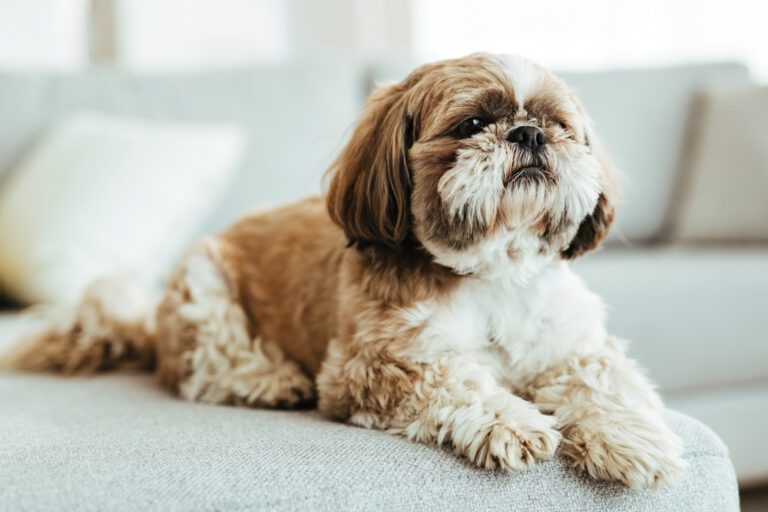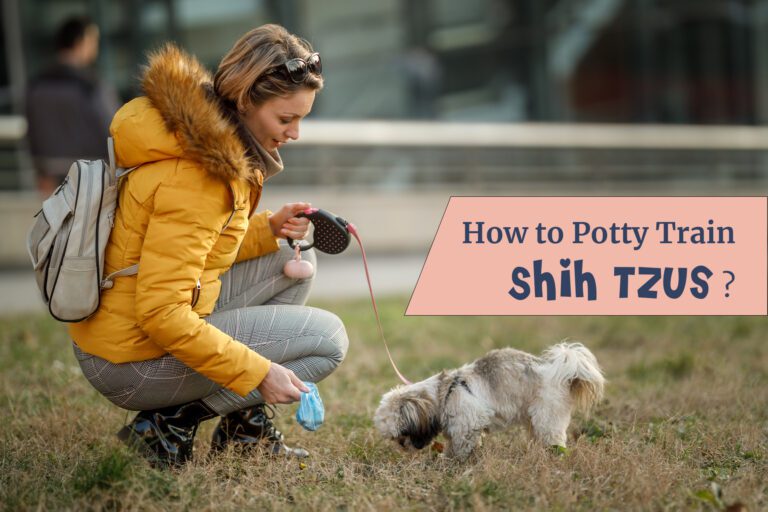How To Crate Train A Shih Tzu Puppy: 10 Easy Steps
If you’re reading this, you have a Shih Tzu puppy or are considering getting one. Congratulations! They make great pets and are known for being low-maintenance and easy to train. One of the first things you’ll need to know is how to crate train a Shih Tzu puppy. It will provide them a safe space to sleep, play, and potty.
Crate training can also make traveling with your Shih Tzu easier and keep them safe when you cannot supervise them. While crate training may initially seem intimidating, it’s a relatively simple process that can be accomplished in just a few easy steps.
This guide will outline precisely the crate training Shih Tzu in 10 easy steps. By following these steps and being consistent, you can successfully crate train your Shih Tzu and give them a comfortable and safe space to call their own.
Why is Crate Training Shih Tzu Important?
Crate training is a process of teaching your dog to accept being confined in a crate. It is important to crate-train your Shih Tzu puppy for several reasons:
-
Crate training your Shih Tzu can be an important part of their overall training and development.
-
It can help your Shih Tzu feel more secure and comfortable in their environment, providing them with a ‘den-like’ space that is all their own.
-
It can also help prevent problem behaviors such as separation anxiety, chewing, and barking, as your Shih Tzu will learn that they can find comfort and security in their crate when left alone.
-
It can also be useful when you must confine your Shih Tzu for their safety, such as during car journeys or when visitors come to your home.

How to crate train a Shih Tzu puppy?
Crate training is an integral part of puppyhood. It can be beneficial to leave your pup alone for short periods. When done correctly, crate training can help your puppy feel safe and secure in their space. It can prevent destructive behaviors like chewing or barking. If you’re crate training a Shih Tzu pup, there are a few things to keep in mind:
1. Choose the right size crate
The crate should be big enough for your puppy to stand up, turn around, and lie comfortably. However, it should be manageable, as this will give your puppy too much space and make it difficult for them to feel safe and secure.
2. Place the crate in a quiet area
It would be best to place the crate in an area of your home that is quiet and away from commotion or activity. It will help your puppy feel safe and relaxed in its crate.
3. Introduce your puppy to the crate gradually
It would be best to place the crate in an area of your home that is quiet and away from commotion or activity. It will help your puppy feel safe and relaxed in its crate.
4. Make sure the crate is comfortable
You should ensure the crate is comfortable for your puppy by adding a soft bed, blanket, and toys. It will help them to feel more at ease when they are inside.
5. Feed your puppy in its crate
One way to make your puppy associate the crate with positive experiences is to feed them their meals inside. It will help them to associate the crate with something pleasant (i.e., food).
6. Crate your puppy when they are tired
Another good time to put your puppy in its crate is when they are tired from playing or exercising. It will help them to see the crate as a place to rest and relax rather than a place of confinement.
7. Avoid using the crate as punishment
You must avoid using the crate as punishment. It will only make your puppy associate it with negative experiences. If your puppy does something you don’t want them to do, redirect its attention to something else or ignore the behavior altogether.
8. Crate your puppy when you cannot supervise
When you cannot watch your puppy, put them in their crate with a toy or bone to keep them occupied.
9. Don’t leave your puppy in its crate for too long
A good rule of thumb is to not leave them in their crate for more than four hours at a time unless it is overnight while you are sleeping.
10. Be consistent with your rules and rewards
Every family member should follow the same rules for using the crate and reward your puppy when they behaves well inside it.
Our Recommendations
How long does it take to crate train a Shih Tzu?
Crate training is an essential part of owning a Shih Tzu. Not only does it provide your puppy with a safe and comfortable place to sleep, but it also helps to housebreak them. While every puppy is different, most Shih Tzus will be able to learn how to use a crate within a few weeks. The key is to start slowly and increase your puppy’s time in their crate each day. You should also make sure to put some of their favorite toys or blankets in the crate so that they associate it with positive experiences. With patience and consistency, you should be able to successfully crate train your Shih Tzu in 2 to 4 months.
Why is Crate Training Important in Potty Training a Shih Tzu?
Crate training is an important part of potty training a Shih Tzu. The crate will act as the puppy’s “den,” he will be less likely to soil it if he knows it is his safe place. When crate training, choosing a crate that is the appropriate size for your puppy is essential. He should be able to stand up and turn around in the crate. But it should be a little more spacious, or he will be tempted to use one end as a bathroom. You will also need to create a schedule for taking your puppy out of the crate and feeding and walking him.
Related: How To Potty Train Shih Tzus: The Ultimate Tips And Tricks
Once you have established this routine, you can teach your puppy how to use the bathroom outdoors. Start by taking it to the same spot each time and using a cue word or phrase (such as “go potty”). With patience and consistency, you can successfully potty train your Shih Tzu using crate training.
Conclusion
Congratulations! If you’ve followed the steps outlined in this guide, your Shih Tzu puppy should now be crate-trained. Remember that crate training is a process, and your puppy may take time to become comfortable. Be patient and consistent, and always remember to reward good behavior. It’s essential to remember that crate training is not a form of punishment and should never be used as such. Constantly monitor your puppy’s needs and make sure they have enough time to rest, play, and relieve themselves. With patience and persistence, you can successfully crate train your Shih Tzu puppy and give them a happy, healthy home.
FAQ’s
How Long Should My Puppy Stay in the Crate?
Your puppy’s age in months is a good guide for how long they can stay in the crate. For example, if they’re 3 months old, they can stay in for about 3 hours. But remember, puppies need lots of breaks for potty time and playtime!
Can I Crate Train My Puppy at Night?
Yes, you can! Start by placing the crate in your bedroom so they don’t feel alone. Knowing you’re nearby can help them (and you) sleep better through the night.
How Do I Stop My Puppy From Whining in the Crate?
First, make sure they’ve had enough playtime and potty breaks. It might be tough if they’re still whining, but wait until they quiet down before letting them out. This teaches them that quiet behavior is the way out of the crate.
When Can I Stop Using the Crate?
There’s no set time to stop using the crate. Some dogs love their crate their whole life! But if you want to give them more freedom, start by leaving the crate door open and see how they do.










